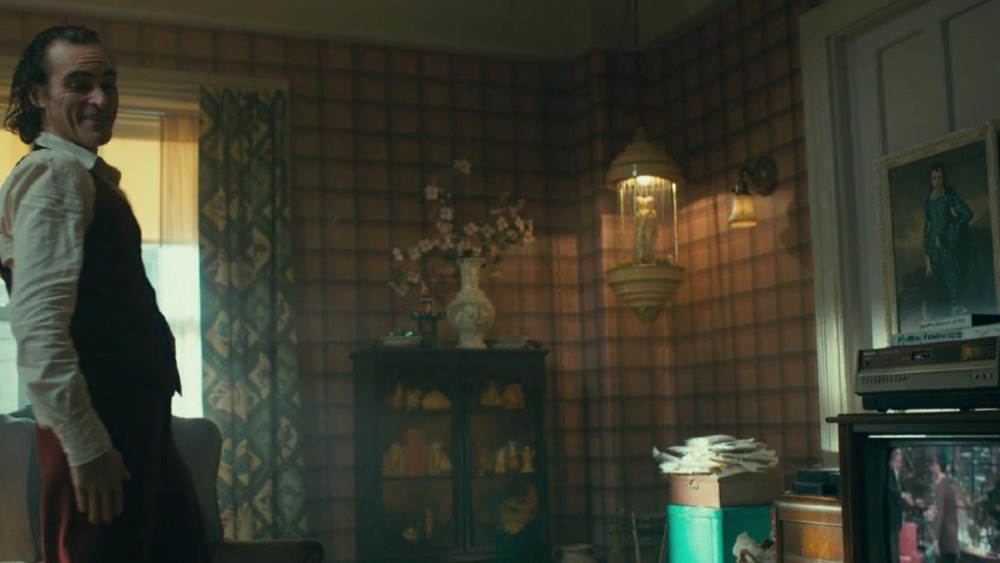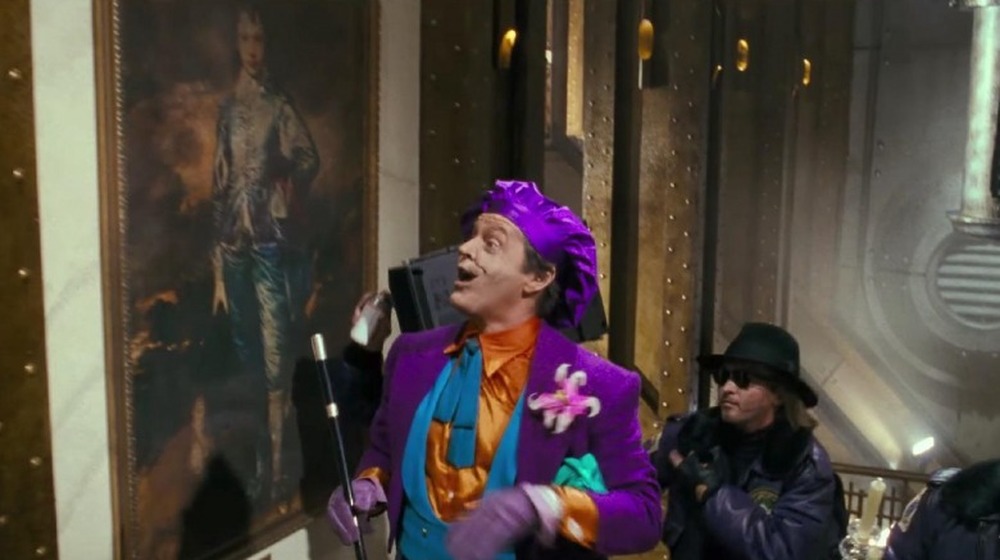Why This Painting In 2019's Joker Means More Than You Think
2019's Joker, starring Joaquin Phoenix, was a lot of things — a rare, Academy Award-winning comic book movie, a deep dive into an iconic character's psyche, and a source of seemingly endless heated internet discussion. For single White guys in their 30s, it worked as a perfect conversation starter on first dates and, in turn, served as a reasonable trigger for their dates to pretend to take a phone call and then never come back.
Creating an origin story for the Joker has always put artists on shaky ground. For whatever reason, in spite of all of DC's stable of characters with fluid beginnings, the Clown Prince of Crime's genesis is the one that fans get their hackles up over. The temptation for writers to put a unique stamp on the story has to be balanced delicately against the beloved entries that came before — not too familiar, but not not familiar either.
Overall, the majority of fans and critics seemed to think that Joker did a fine job of creating its own spin on a well-known character. What many of them missed, however, was a nod to the old days of superhero cinema, calling back to a simpler time when audiences were certain that nobody would ever top Jack Nicholson's take on the villain. It's subtle, but there's something familiar about one of the paintings in Arthur Fleck's apartment.
The Joker doesn't know if it's art, but he likes it
Gentlemen, let's broaden our minds. The painting, entitled "The Blue Boy," hails from the 18th century, a portrait and historical costume study by Thomas Gainsborough. While it currently resides in the Huntington Library in San Marino, California, it made at least one notable stop on its way there — in Gotham City, circa 1989.
Yes, "The Blue Boy" was featured, albeit briefly, in Tim Burton's Batman. The scene in question features Nicholson's Joker leading a group of devotees through Gotham's Flugelheim Museum after gassing the building's occupants. Together, they repaint some Rembrandts and defile Degas, all with the help of Prince's "Partyman" as a backing track. Joker seems at least a little inspired by "The Blue Boy," striking a similar pose to its subject just before one of his goons trashed it with a can of spray paint. Clearly he didn't like it as much as Francis Bacon's "Figure with Meat," which he stops Bob from hacking with a bowie knife, but any response to a piece of art is worth celebrating.
While it's not clear whether the inclusion of "The Blue Boy" was a deliberate Joker Easter egg on the part of director Todd Phillips, it would be a bizarre coincidence if it wasn't. File it under unanswerable Batman questions, along with "where does he get those wonderful toys?"

